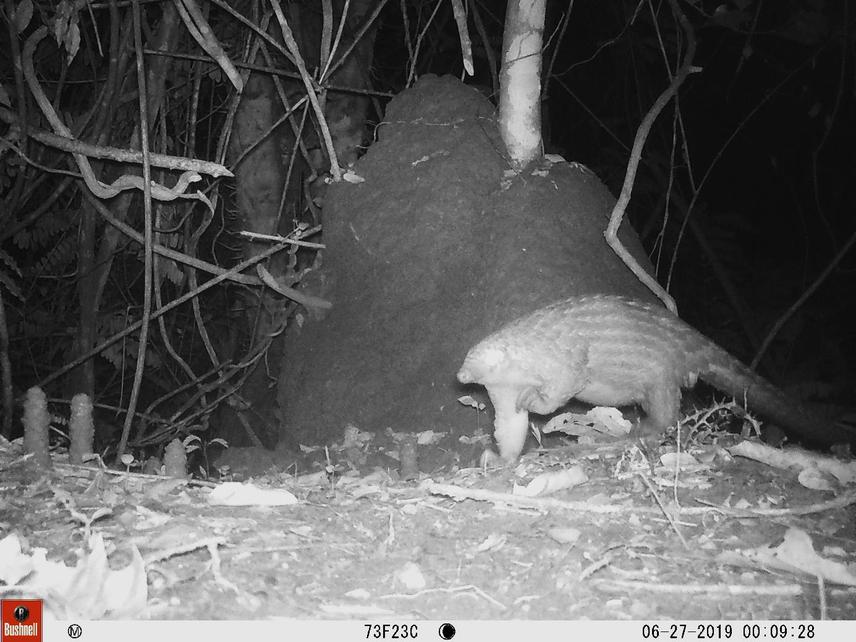Ghislain Difouo Fopa
Other projects
19 May 2020
Evaluation of the Impact of Anthropogenic Activities Threats on Pangolins Population in the Deng-Deng National Park (DDNP)-Cameroon
22 Feb 2024
Enhancing Pangolins’ Conservation in the Southern Cameroon Plateau: Population Status, and Community-Based Actions to Mitigating Threats
Morphological and genetics features of African Pangolins, population size, distribution partner, feeding behaviour as well as traffic routes are essential information for successful conservation programs. These data are still lacking for many pangolins’ species and hindering conservation efforts. This project will gather information on seasonal variation in distribution, habitat and food preferences of the Giant Ground Pangolin, White-bellied Pangolin, and Black-bellied Pangolin which are known to occur in the Deng-Deng National Park situated in the forest-savanna transition zone of the Cameroon Eastern region.
Data will further help to design and manage more viable Pangolin sanctuaries by ensuring that an adequate mix of different habitat is included within sanctuaries.

White-bellied pangolin footage inf the Deng-National Park. © Difouo Fo
Pangolins are commonly called scaly anteater; they consume large amounts of ants and termites; a Pangolin adult can consume more than 70 million insects annually and up to 200.000 ants can be eaten during a meal.
Pangolins are easily hunted and their slow reproductive rate (most species have at least one offspring per year) makes them vulnerable to exploitation (IUCN 2014, Gaubert 2011); they are slow moving and have poor eyesight, making them vulnerable to snares (Burton, 2009). The three pangolins species amount the four African Pangolin that occurs in Cameroon including the Giant ground Pangolin, Black-bellied, and the White-bellied Pangolin shared their range. They are all threatened due to illegal hunting for bushmeat markets and international trafficking of pangolins scales for traditional remedies in Asia and protected by Cameroonian Wildlife management laws. There is a lack of data on the natural history of these three species in their range, their diet and habitat preferences, seasonal changes in behavior and these gaps impede the ability to develop effective conservation strategies for these threatened species. For example, it would be useful to know what kinds and composition of habitats are required to support viable populations of different species within protected areas and other Pangolin sanctuaries.
Here, our knowledge of the food and habitat preferences of Cameroon’s three species of Pangolin are investigated in a national park that occur on the forest-savannah transition zone.
An improved understanding of these traits can further help to design and manage more viable Pangolin sanctuaries by ensuring that an adequate mix of different habitat is included within sanctuaries and that sufficient area of key habitats is incorporated to be able to sustain viable populations of each species.
Cameras traps will be used to assess pangolins distribution and habitat’s preferences by presence/absence both in savanna/forest zone and the seasonal variation in Deng Deng National Park. The prey assemblage’s survey will be conducted in other to assess the prey availability in Pangolins habitat and compared with the species which occurs in its diet to assess whether any particular prey species is preferentially selected. For diet survey, Pangolins stomach and gut of a dead pangolin seized by the wildlife guardian authority will be sampled and stored in formal for insect identification. The local communities will be sensitized and aware for local extinction of pangolin and the conservation importance of this species during an educational meeting.